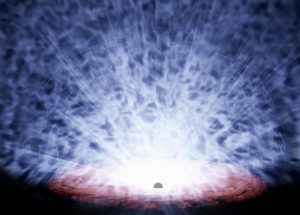Technion and University of Tokyo Researchers Reveal Powerful Winds Ejected from Black Holes
A new study published in Nature uncovers a dramatic phenomenon occurring in black holes: ultra-fast winds traveling at 20–30% the speed of light. The research, led by Prof. Ehud Behar of the Technion Faculty of Physics and Prof. Kouichi Hagino of the University of Tokyo, focuses on the supermassive black hole PDS 456.
The study was conducted in collaboration with the Japan Aerospace Exploration Agency (JAXA) and is based on data from the XRISM space telescope, which measures X-ray radiation. XRISM is designed to lead to discoveries about the formation of the universe, the evolution of galaxy clusters, and the structure of spacetime near black holes. The telescope is already contributing to the mapping of major cosmic phenomena and enhancing our understanding of dynamic processes linked to the formation of elements and the development of cosmic structures.

Background
At the center of most galaxies lie supermassive black holes, whose mass correlates with that of the galaxy’s bulge—suggesting they evolve together. This co-evolution is likely driven by the powerful winds emitted from the black hole’s surrounding regions. These winds are detectable through X-ray observations, but prior technologies couldn’t accurately map their structure or movement. XRISM has solved that challenge.

Key Findings
- The black hole ejects winds with 1,000 times more energy than known galactic winds
- These winds do not flow smoothly but are emitted in dense clumps, like “bullets”
- They are expelled simultaneously in multiple directions
- The estimated gas ejection rate is hundreds of solar masses per year — an enormous rate even by galactic standards
Artistic rendering of the PDS 456 black hole. The fast-moving winds are shown in white. Credit: JAXA
About the XRISM Project
XRISM is a joint project of JAXA and NASA, with contributions from ESA (the European Space Agency). Prof. Behar is the only researcher on the XRISM science team who is not from one of these space agencies, having been personally appointed by the director of Japan’s Institute of Space and Astronautical Science.
XRISM builds on the lessons learned from previous Japanese X-ray telescopes that encountered mission-ending failures. Its goal is to ensure continuity in X-ray observations, crucial for advancing high-energy astrophysics until the launch of the ATHENA telescope (not expected before 2035). For at least the next 13 years, XRISM will be the only telescope of its kind, securing an unbroken sequence of critical observations.
Click here for the full article.




